Tamela Rich's Blog, page 9
October 23, 2014
Thoughts on Self-Care and Re-launching Your Life
This past Saturday I was privileged to keynote the North Carolina Occupational Therapy Association‘s Fall Conference. They asked me to address the question of self-care, since occupational therapists, like many people in the “helping professions,” very often find themselves emotionally fatigued by the work they also find to be satisfying.
Far too many leave themselves no energy for themselves and their families.
Imagine yourself in their shoes: helping patients relearn how to do things like dress themselves after a stroke, or feed themselves after a car accident that smashed a hand; dealing with insurance companies that don’t want to fund sufficient therapy visits; and interacting with family members of patients who are not coping well with the big changes in their loved ones. All in the same hour.
Whew, I get tired just thinking about it.
Burnout is a serious matter, here’s how I know
I know a bit about where burnout can go and the need for self-care, as I discussed in both my TEDx Talk and in this radio interview from last night with Bonnie Graham. You can hit the “play” button at the top of this post to hear me discuss with Bonnie my descent into despair and suicidal ideation, and the role that learning to ride a motorcycle played in the relaunch of my life.
If you are in a helping profession, (including a full-time parent) here’s a Professional Quality of Life Scale (self-assessment) that will help you gauge your “Compassion Satisfaction,” your “Burnout” and your “Secondary Traumatic Stress.” The occupational therapists found it to be a useful tool.
Once you determine that you’re in a tough spot, it’s time to make some changes.
Life is a series of re-launches
As I told the occupational therapists, you relaunch your life with what you have, starting where you are. Many of their patients relaunch their lives after an accident with brain injuries and without certain limbs. I relaunched my life in 2010 with the aid of a motorcycle and a 7500-mile, 20-state road trip.
One of the beauties of setting out on my own is that when I met people on the road, I didn’t have to share with them the train wreck I’d made of my life; I could instead emphasize what was going well. I told them I was traveling across this beautiful country on my own, on my motorcycle, helping a worthy cause.
That’s an important takeaway: emphasize what’s going right in your life, even if it’s only your ability to draw breath. Start there.
In turn, the people I met on my travels responded enthusiastically, suggesting places I should try to fit into my itinerary and telling me I was brave. That kind of positive reinforcement helped speed my emotional recovery. If you don’t have people in your life who give you positive reinforcement, widen your circle of friends—they’re out there, I promise.
As I noted in my TEDx Talk and the radio interview, many other people who approached me on my bike told me about their own lives, which was an honor. I learned that there is something therapeutic about telling your story to a sympathetic stranger.
Motorcycles and psychiatrists
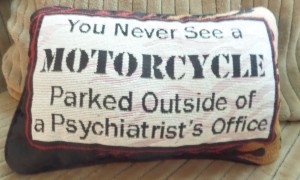 I was particularly touched when one of the therapists approached me at my book signing table with a pillow that she bought for me in the conference center gift shop. Pictured left, it observes, “You Never See a Motorcycle Parked Outside of a Psychiatrist’s Office.”
I was particularly touched when one of the therapists approached me at my book signing table with a pillow that she bought for me in the conference center gift shop. Pictured left, it observes, “You Never See a Motorcycle Parked Outside of a Psychiatrist’s Office.”
What a lovely gesture. I’ll always treasure it.

October 16, 2014
What’s behind the Haunted House at Creekside Manor?
I occasionally contribute to the KOA (Kampgrounds of America) blog. Last year, I was speaking at a Maryland cancer event and got a tip that a nearby campground operated a haunted house with a regional draw.
I agreed to check it out, surprised by how much haunted houses have changed since I went through one (ahem) 30+ years ago.
The genesis of Creekside Manor
When John and Judy Durham bought a house beside their 26-acre campground in Williamsport, Maryland, they never imagined that ghosts were already in residence. They intended to renovate and live in it, but during the renovations, they kept seeing and hearing apparitions.
Since actor Bill Murray hasn’t been a Ghostbuster since the 1980’s, the Durhams instead turned to the National Ghost Hunters Society for a report. The findings? “The most haunted house” they’d ever investigated.
There was no way they could live in the house after that shocking news, so they decided to go where the proverbial spirits led them. They named the house Creekside Manor and now have the pleasure of spooking some 3,500 visitors each October.
A haunted house with a backstory
In my childhood, the Jaycees ran the hometown haunted house. Visitors waited in line for a solid hour anticipating the thrill of walking through room after room of auto mechanics, accountants and insurance salesmen dressed as vampires, werewolves and chainsaw-wielding zombies. Pretty tame stuff compared to what Creekside Manor offers visitors at the Hagerstown/Antietam KOA, I assure you.
Whereas my hometown Jaycees’ haunted house promised lots of scares, they were random acts without a theme. Creekside Manor, on the other hand, is built on a clever backstory. Written by John Durham himself, the legend of Creekside Manor begins with Mable Mockenburry, who lived in the house in the 1800s. Mable began her life (and afterlife) of misdeeds by butchering her parents and serving them to the townsfolk as BBQ. Each year, the Mockenburry legend further unfolds like a supernatural soap opera; you can read it on Creekside’s website.
Behind the scenes at Creekside Manor
I got a behind-the-scenes tour of Creekside Manor (in daylight, thankfully).
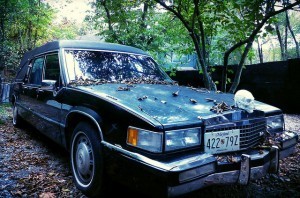 John and the twenty-plus actors and makeup artists he hires each Halloween season take the business of fright very seriously. Although he has lost count of the gallons of blood-red paint he’s used over the years, John is always on the prowl for props, including the 1977 Cadillac hearse that’s parked in the cemetery amidst donated grave stones.
John and the twenty-plus actors and makeup artists he hires each Halloween season take the business of fright very seriously. Although he has lost count of the gallons of blood-red paint he’s used over the years, John is always on the prowl for props, including the 1977 Cadillac hearse that’s parked in the cemetery amidst donated grave stones.
Several of the spooky automatons that writhe, threaten and moan came from Hollywood movie distributors and are powered by industrial-sized generators of compressed air. When it came time to see one of them, “hell dog,” John gave me ample warning of what was to come but I was truly spooked when it lunged at me ferociously from behind its door. Hell dog is pictured at the top of this post.
Fun for all ages
I should note that Creekside Manor itself is off limits to anyone under twelve. The campground offers visitors lots of tame and creative activities for those who don’t want to be thrilled and chilled. For example, the inflated jump house called “Mable’s Fun House” is for those twelve and under.
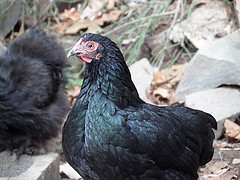 Since I’m more a farm girl than a spook lover, I was fascinated by the livestock, vegetable beds and flowers at the campground. Lee Oliver, the campground activities director, offers guests arts and crafts including pumpkin carving. She hires a magician, shows movies, and can tell you about the campground’s 14 breeds of chicken (numbering 54 hens and one rooster) and 3 goats.
Since I’m more a farm girl than a spook lover, I was fascinated by the livestock, vegetable beds and flowers at the campground. Lee Oliver, the campground activities director, offers guests arts and crafts including pumpkin carving. She hires a magician, shows movies, and can tell you about the campground’s 14 breeds of chicken (numbering 54 hens and one rooster) and 3 goats.
The campground’s cafe is chockablock with I Love Lucy memorabilia, including authentic scripts and clothing worn by Lucille Ball herself. I have a Flickr album from my visit, including some photos of the cafe.
The Durhams warn potential guests who want to stay at the campground during Creekside Manor season to book reservations NOW. People come from a 200-mile radius of the property and some of 2015’s October sites are already booked!

October 14, 2014
Six Ways to Respond when Someone Says, “I Have Cancer”
Everyone knows someone with cancer or another life-threatening illness, but few of us know how to talk about it. 
Researching my book, Live Full Throttle: Life Lessons From Friends Who Faced Cancer, I interviewed more than 100 people who have faced one of life’s ultimate sinkholes. They told me stories about everything—from how the disease altered the trajectory of their lives to how a cancer diagnosis changes the simple act of human conversation.
Here is what I learned: while we all know someone with cancer or another life-threatening illness, few of us know how to talk about it. Because nobody wants to be “that person” who says the wrong thing, many of us hold back from saying anything at all.
But when friends and family hold back, the unintended consequence for the person with cancer is feeling alone and unsupported.
Six ways to respond when someone tells you about a scary diagnosis
So what exactly should you say when someone reveals a scary diagnosis like cancer? While it’s unrealistic to expect a perfect response, here are some guidelines that will point you in the right direction:
Say something supportive. You don’t have to be witty or wise, just use genuine and constructive statements. For example, try saying “I’m here for you and always will be,” or “I’ll keep you in my thoughts and prayers.” Then be quiet and see where the conversation goes from there.
Remember who this person is aside from having cancer. She’s a neighbor, mother or student; he’s a painter, uncle or co-worker. Add the words “with cancer” to the way you think of him or her. This helps you keep the emphasis where it belongs when you communicate.
Be the comforter —not the one looking for comfort. Don’t expect the patient to comfort you in your sadness or concern over their diagnosis. The patient needs your support, not the other way around. Ask how you can support.
Suggest something specific you can do. The patient might be reluctant to ask you to clean out his refrigerator or walk her dog, but might be delighted to accept your offer. Other kinds of support might be offering to make a daily phone call at a specific time. Consider scheduling reminders in your calendar to call, email or visit.
Use sincere language instead of repeating trite advice. For example, don’t say, “Everything will be fine.” That phrase can sound dismissive. Plus, no one knows the future.
Let the cancer patient take the lead. Listen for cues that tell you what she wants to talk about. Remember, sometimes people don’t want to talk about their diagnosis; they just want to talk about everyday things.
Regardless of what you say aloud, understand that getting a scary diagnosis makes the patient and everyone in their circle of family and friends think about life very differently. It’s a good thing for all of us to consider our own mortality.
We all need to make the most of our time here on Earth. None of us is promised tomorrow.

September 22, 2014
World Traveler-Author Allan Karl with Neale Bayly. Part Four of Four
By now, after three parts of our interview, you have fallen in love with world traveler Allan Karl, author of “Forks: A Quest for Culture, Cuisine and Connection” and Neale Bayly, motorcycle philanthropist.
The re-entry zone: bittersweet feelings when a road trip draws to a close
Just as our podcast series comes to a close, every journey must also close. As a matter of fact I’m posting this just a day after returning from my travels through New England and New Brunswick. Being on the road for 25 days in late summer is a blessing for which I am grateful. Now it’s back to client business.
In this podcast, Allan, Neale and I talk about the re-entry zone: that mixed emotional state of happily anticipating the return home to family and friends while saying goodbye to the road. Allan finished his 62,000-mile adventure by traveling from Baltimore, Maryland to Southern California on the highways and byways. He tells a poignant story of a fellow traveler he met on the Blue Ride Parkway.
Neale and I chip in with reflections on “mindful minimalism.”
Good times.
You can catch Part One here.

September 6, 2014
World Traveler-Author Allan Karl with Neale Bayly. Part Three of Four
The first two Parts of this series are focused on round-the-world traveler and author Allan Karl’s adventures.
Neale Bayly, adventure motorcyclist and philanthropist
Neale is the founder and president of Wellspring International, a charity that supports orphaned children. Neale’s motorcycle adventure tours from around the world fund most of its operational costs. You may have seen his 2013 TV show, Neale Bayly Rides Peru, which aired on SPEED (now Fox Sports).
Neale calls himself a “high speed commuter” because, as an international moto-journalist, he flies around, rides a motorcycle around a track or a remote country, then shuttles back to tell the tale. If you’ve ever wondered about the behind-the-scenes story of what looks like a sexy career, you’ll want to listen to Neale tell all right here.
Allan Karl reveals more about his Bolivia trip than was included in his book, “Forks”
Allan then continues his world-traveling tale in Bolivia talking about being invited to a family birthday party, ending in a funny story about a road rally. This is a podcast exclusive, folks, not even told in his beautiful book, “Forks: A Quest for culture, Cuisine and Connection.”

August 27, 2014
World Traveler-Author Allan Karl with Neale Bayly. Part Two of Four
In the first Part of this four-part series, you met Allan Karl and Neale Bayly.
Part Two features Allan’s story from Bolivia, where he suffered a crushed leg from a crash that detoured him for six months on his trip around the world as he flew back to the states for medical care and physical therapy.
His crash was in a remote part of the country and the only medical care available to him for days was ibuprofen. That part of his story is in his book, “Forks: A Quest for Culture, Cuisine and Connection.” What isn’t in the book is what happened when he returned to Bolivia and crashed again. We’ve got that right here in Part Two.
Stranger danger?
The question I’m most often asked about my solo travels is whether I’m afraid of all the strangers “out there.” Like Allan, I’ve found that the vast majority of people are well-meaning and will go out of their way to help you out of a jam. In Allan’s case that meant transporting him some twelve hours down a mountain in a rickety vehicle during a thunderstorm.
Enjoy!

August 25, 2014
A Child Bride’s 30th Wedding Anniversary
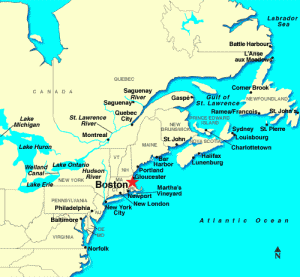 My odometer hasn’t turned over in eight weeks.
My odometer hasn’t turned over in eight weeks.
Why? I’ve been blessed with a great deal of client work AND have been writing the first draft of my new book, Life Lessons from the Road: Riding Deep into the Soul. The book needs to sit and steep for a few weeks while I renew my relationship with the road. I’ll put the kickstand up this afternoon.
Speaking of relationships, my long-suffering spouse will join me in southern Massachusetts for Labor Day weekend to celebrate our 30th wedding anniversary. Of course I’m NOT OLD ENOUGH to be married that long, but there it is, child bride and all that.
I was a child bride
Seriously, Matt and I married right out of college. Even by 1984 standards we were rather young to make a lifetime commitment. Keeping that commitment is statistically extraordinary.
In a sense, we’ve grown up together, which has been a crucible for forging our characters. Crucible?
Yes, a crucible is a vessel that goes into the furnace, subjecting the base metals it contains to extraordinary temperatures that will melt away impurities. Matt and I have faced the melting point several times in 30 years, some of which I share in my TEDx talk and some of which I’ll share in Life Lessons from the Road.
The alchemy of marriage
Life is embedded hardships designed to forge our characters, isn’t it? Sometimes I’m Matt’s hardship and other times he’s mine, but we always have each other’s back.
It’s been helpful for me to see marriage as a alchemical process of the soul instead believing that if I could only find my “true soul mate” all my life’s troubles would melt away. Thomas Moore writes about the alchemy of marriage in his profound book, Dark Nights of the Soul; recommended reading.
People often ask how I “get away with” traveling so much and how Matt deals with it. In truth, he wishes I did something more conventional and closer to home, but in a marriage that’s lasted 30 years, we’ve both learned to give each other the room we need to be our true selves.
I’m not an easy person to make a life with. Thanks for giving me a reason to come home, Matt. Happy anniversary.

August 24, 2014
World Traveler-Author Allan Karl with Neale Bayly. Part One of Four
In this four-part podcast series, I’ll introduce you to a couple of my friends who’ve traveled the world on motorcycles.
You may already know Neale Bayly, who joined me for a conversational TEDx talk earlier this year. Now meet world traveler-author-speaker Allan Karl.
Forks: A Quest for Culture, Cuisine and Connection
Allan Karl is the author of “Forks: A Quest for Culture, Cuisine and Connection,” which he wrote after three years of traveling around the world—solo— on his BMW F650GS Dakar. Some of you may remember that my brother taught me to ride on a Dakar, and I have traveled on my own single-cylinder BMW ever since.
Allan’s “Forks” is part memoir, part travelogue and part recipes from every country he traversed. It’s a gorgeous coffee table-style book with photos from Allan’s travels and recipes from each of the 35 countries on his itinerary.
Allan, Neale and I sat down for a rambling conversation when Allan came to Charlotte, NC as part of his book tour. We went pretty long—imagine that!—so I made it a four-part series.
Interested in self-publishing and Kickstarter fundraising?
In this part you’ll hear Allan’s journey to publishing his magnificent book, which is how we met; I answered a Survey Monkey survey that helped him choose the title then backed him on Kickstarter to pay for printing.
Just as he chose to “go it alone” around the world, Allan decided to self-publish and tells us why here. If you are interested in self-publishing or how to make a Kickstarter exceed its goals, you won’t want to miss Allan’s story.
I don’t love everything about social media, but I adore the way a social media friend can—and did—become a friend in real life.

July 15, 2014
Runnin’ Shotgun with Dad and a CB Radio
We took a road trip from Ohio every two or three years in our Oldsmobile Vista Cruiser to visit family in California.
Hauling three kids some 3,000 miles in close quarters with a weak air conditioner might make the heartiest parent shudder, but not mine.
Parents today prepare for road trips by stocking up on DVDs and iPad games. In the mid-1970′s Mom and Dad installed a CB radio in the Vista Cruiser. THIS one purchase set the stage for an epic road trip!
First I have to tell you what a CB radio is and how we used it.
CB radio? What’s that?
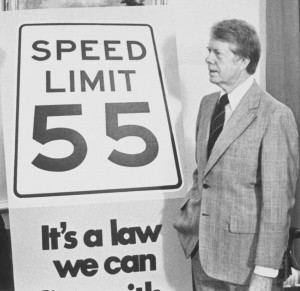 Citizen Band radio (CB radio) required special equipment but not an operator’s license. If you had the right equipment you just jumped on the the airwaves, communicating with other CB users on one of 40 open channels.
Citizen Band radio (CB radio) required special equipment but not an operator’s license. If you had the right equipment you just jumped on the the airwaves, communicating with other CB users on one of 40 open channels.
People used it like today’s social media—you could follow public conversations in real time without saying a word. Social media users call this “following the stream” or “lurking.”
CB radio had been used by truckers for years but it became popular with the general public as the means to subvert the 1974 national speed limit of 55 m.p.h. Truckers’ wallets were jeopardized by the law while everyone else was merely inconvenienced, but the law was universally despised and flouted.
The state highway patrol departments became major revenue sources and aggressively pursued speeders.
The truck drivers all communicated on channel 19 so they could keep each other apprised of road hazards and law enforcement (code name, “Smokey the Bear” or “Smokey” or “bear”) so everyone else who wanted to dodge the law tuned into channel 19, too.
CB jargon hits pop culture & America’s Top 40
In 1975 the wildly-popular song Convoy, hit the airwaves. It told of a fictitious convoy of 18-wheelers that blockaded highway lanes and refused to stop for any reason—including law enforcement—as it traveled west to east, picking up converts and reinforcements along the way.
Real-life trucker convoys and strikes were real, but not as flamboyant as the song portrayed them to be.
You couldn’t go an hour between plays on every country or pop music station on your AM/FM dial. The song became a movie in 1978 and taught us all CB jargon like “10-4 good buddy” and “put the pedal to the metal.” That’s how CB talk became common parlance.
You’d even hear people in grocery stores and PTA meetings saying “10-4″ instead of “okay.”
Fascinated by this history? Mortal Journey offers an extensive list of jargon and a history of the CB radio.
Choosing our “CB handles” before hitting the road
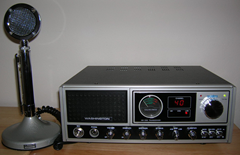
Picture courtesy of Mortal Journey
My family went all-in on CB radio culture. We had a base camp unit at home that resembled the one in the picture (left). My grandparents lived about two miles away and we could give them a “shout” on the CB instead of using the rotary-dial telephone that was RENTED from the phone company and weighed more than the family dog.
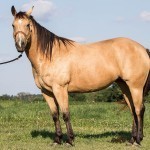
Photo of this Buckskin-colored horse courtesy of Skunktail17
In preparation for our bi-annual road trip, Dad installed a mobile CB unit in the wagon and everyone in the family chose their “handles,” which was sort of like choosing your Twitter name (I’m @TamelaRich there). In the Convoy song and movie, “Rubber Duck” and “Pig Pen” were handles (have you watched the clip yet?).
I was “Buckskin,” a horse color. Dad was “Stage Coach,” and Mom was “Running Deer.” Since I was the eldest child—and a teenager —I didn’t give a hoot what my younger siblings’ handles were.
The CB was a precursor to the cell phone. We could use the base camp to hail Dad on the CB Radio in the Vista Cruiser and tell him to stop at the store for a missing dinner ingredient. For sport he’d say “Stage Coach here. I’ll put the ‘pedal to the metal’ and be home in five minutes.”
Ohio to California with the truckers on CB
Now, back to the promised story about our legendary Ohio-to-California road trip.
Traveling along I-40 and parts of the old Route 66 we faced a couple of days in the scalding desert both going to and coming from California. At midsummer, those days were brutal in a car with vinyl seats and an underpowered air conditioner.
On that note, some highway departments filled roadside barrels with water that drivers could use to keep their radiators from overheating. Please don’t tell me I sound elderly with this recollection.
Mom and Dad had a great system for getting through this portion of the trip. Mom drove the day shift and Dad drove at night. This brought the added advantage of skipping the cost of a motel—take note, minivan parents! 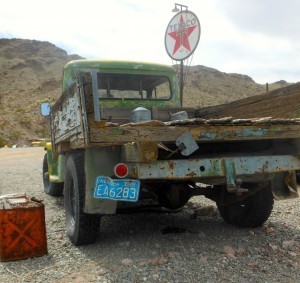
As a night owl myself, my job was to keep the conversation with Dad going in order to keep him awake. In CB jargon, I was “runnin’ shotgun.”
I thought it was great fun spotting Smokey Bears and reporting them on Channel 19. Dad had the eagle eye for Smokies, but he let me make the reports. There weren’t as many bears to spot at night, which was why we had to keep the conversation going.
With my little feet propped up on the dashboard, the air conditioner passing air up my shorts as with the force of a baby’s breath, Dad and I talked about the meaning of life through the wee hours. To this day we are amateur philosophers.
Lots of the truck drivers we eavesdropped and conversed with had philosophical streaks, too. We heard misgivings about the nature of their work: providing for their families too often conflicted with important family events.
Yes, even a tattooed, chain-smoking trucker with Yosemite Sam mud flaps (“Back Off”) will choke up when he tells you the story of missing his daughter’s ninth birthday party.
I still talk to truck drivers, but not on CB. I like asking them at a diner or truck stop about the things they’ve seen and the sights I should be sure to see myself. They lead interesting lives, for sure.
How to report a bear sighting
A CB operator with something important like a bear sighting (law enforcement varietal) to report would start the conversation with “Breaker, 1-9″ which was the way to “break” into the ongoing conversation.
“Breaker 1-9, this is Buckskin. There’s a bear at mile 142 southbound behind the bushes,” meant, “Attention everyone! Buckskin here. There’s a speed trap at mile marker 142 south. Look behind the bushes.”
CB operators would immediately conform to the speed limit, and leave the others to be swept up in the speed traps. I thought it was cool that I could change interstate behavior with one report. The power of broadcasting!
I didn’t always understand the CB conversations—again, like the Twitter feed, they moved quickly, and I was only about 13—so Dad often fed me my lines.
He made me sound grown up and well-informed so I didn’t realize at the time that my high-pitched voice gave my age away. I thought the truckers mistook me for an adult, which of course was my life’s ambition.
The grizzled road warriors often chuckled at my witticisms, but if they stepped out of line, Stage Coach would take the handset and put them in their place.
Busted!
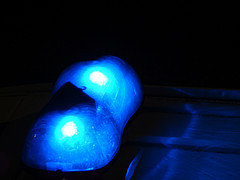
Photo courtesy of Flickr user Jon Candy
One morning, when Dad was at the end of his night shift, I was dozing in the front seat and everyone else was waking up in the back seats. Dad picked up the CB handset and said “Breaker 1-9, this is Stage Coach. I just passed a bear in the median at mile marker (whatever it was).”
And the next sound we heard was a great baritone, “Stage Coach, this is Smokey the Bear. Pull that Vista Cruiser over to the shoulder. We’re gonna have a conversation.” Blue lights lit up in the back window and we children were terrified. We’d never had a run-in with the law!
Mom said, “That’s gonna be an expensive ticket, Stage Coach.”
We all love that memory! I lovingly compare that road trip to National Lampoon’s Summer Vacation (see the video at the top of this post). Dad wasn’t Clark Griswold—he wasn’t as goofy—but he was just as lovable and open to life’s adventures.
Advice for a 2014 road trip with kids
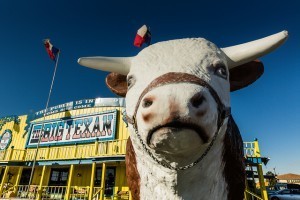
Photo courtesy of Flickr user Tim Anderson
Okay, so why did I tell you this story? It’s the perfect illustration for why parents who want a memorable vacation should actively involve their kids in its planning AND during the road trip itself.
Wait a minute, you’re planning on flying to your destination? Think again!
I remember a few other vignettes from the trip; eating at The Big Texan where I bought a hair ornament decorated with little pistols, meeting my California cousins, and watching nuns play jump rope on the beach with a rope made of sea kelp. Yet nothing makes me smile more the memory of being right in the thick of it with Dad in the middle of the night, sighting bears and reporting them to the truckers.
My advice for involving the kids? Give an older child an entire travel day of the vacation to plan the roadside stops or a destination city to research and make recommendations to the rest of the family. I like the Roadside America and Roadside Presidents and History Here apps for finding unusual sights and historical markers.
Here’s a novel idea: Use MovieLocations.com to search for locations where movies have been filmed. You can search by movie name, actor/director and world map. You’d be surprised the places where movies have been filmed. It’s not always Los Angeles and New York; Missouri saw nine major motion films and Iowa claims six!
A younger child can choose a restaurant from the billboard signs along the way or can choose where to eat a picnic lunch. You can say to the child, “We’re going to stop in Berkeley Springs West Virginia for a picnic lunch. Would you like to eat at a pull-off where you can see three states (Pennsylvania, Maryland and West Virginia), or at this state park where President George Washington took a bath?” Giving kids two choices that you can live with makes everyone happy.
Okay, now back to you. What was YOUR MOST MEMORABLE ROAD TRIP? A friend in college told me about a trip where one of her brothers got car sick and her dad had to pull over and let everyone puke their guts out (puking is usually contagious, even if what caused it isn’t). As I type these words I’m snorting with laughter!
Send me a picture and story from your favorite road trip and I’ll make a collage with your stories! The best story can write a guest post here on my blog.

July 13, 2014
Win 13 Books, including “Live Full Throttle”
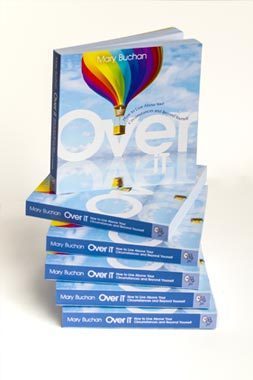
Mary’s book, “Over iT”
“What is on your summer reading list? Maybe you’ll win your next book in this week’s BLOG HOP.
Mary Buchan, Midlifestyle RNventor is hosting this book blog hop during her virtual book launch of Over iT.
Win thirteen self-help books
Thirteen authors (including me) will EACH give you a chance to win his or her book in a giveaway that ends July 23, 2014.
Follow the links below and make sure you enter all for a chance to win. You will simply follow the giveaway instructions on each website. Most of the authors want you to leave a comment and they’ll pick a winner at random from all who do.
You can read the introduction and first chapter of my book at the bottom of this post.
How to win a free copy of my book
To win a free copy of Live Full Throttle: Life Lessons From Friends Who Faced Cancer please leave a short answer to this question at the bottom of this post before midnight EST July 23, 2014:
What life lesson have you learned from someone facing a serious illness?
Make sure you hop over to these author’s websites and enter to win a copy of their books:
Mary Buchan: Over iT
Hallie Hawkins: Money and Credit Guides
Suzanne Letourneau: Soar with Vulnerability
Carol Cassara: Chicken Soup for the Soul
Patti Tingen: Patti Tingen-Author
Paige Kellerman: Paige Kellerman
Dyane Forde: Dropped Pebbles
Rich London: A Handbook for Life
Kim Bongiorno Let Me Start By Saying
Kathy Gottberg: Smart Living 365
John Baumann: Decide Success
Lee McCracken: A Prayer and a Pink Pedicure
Powered by Linky Tools
Click here to enter your link and view this Linky Tools list…
Intro and First Chapter of Live Full Throttle: Life Lessons From Friends Who Faced Cancer by Tamela Rich




